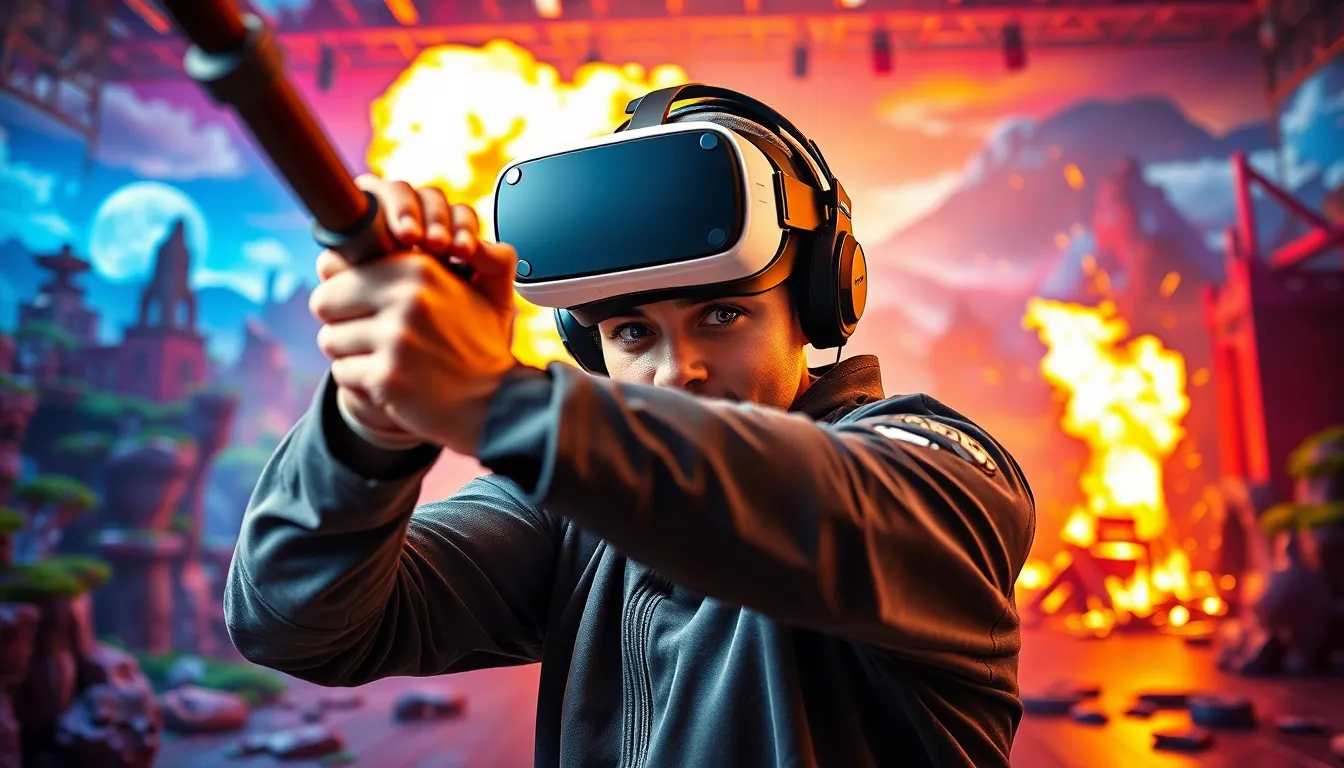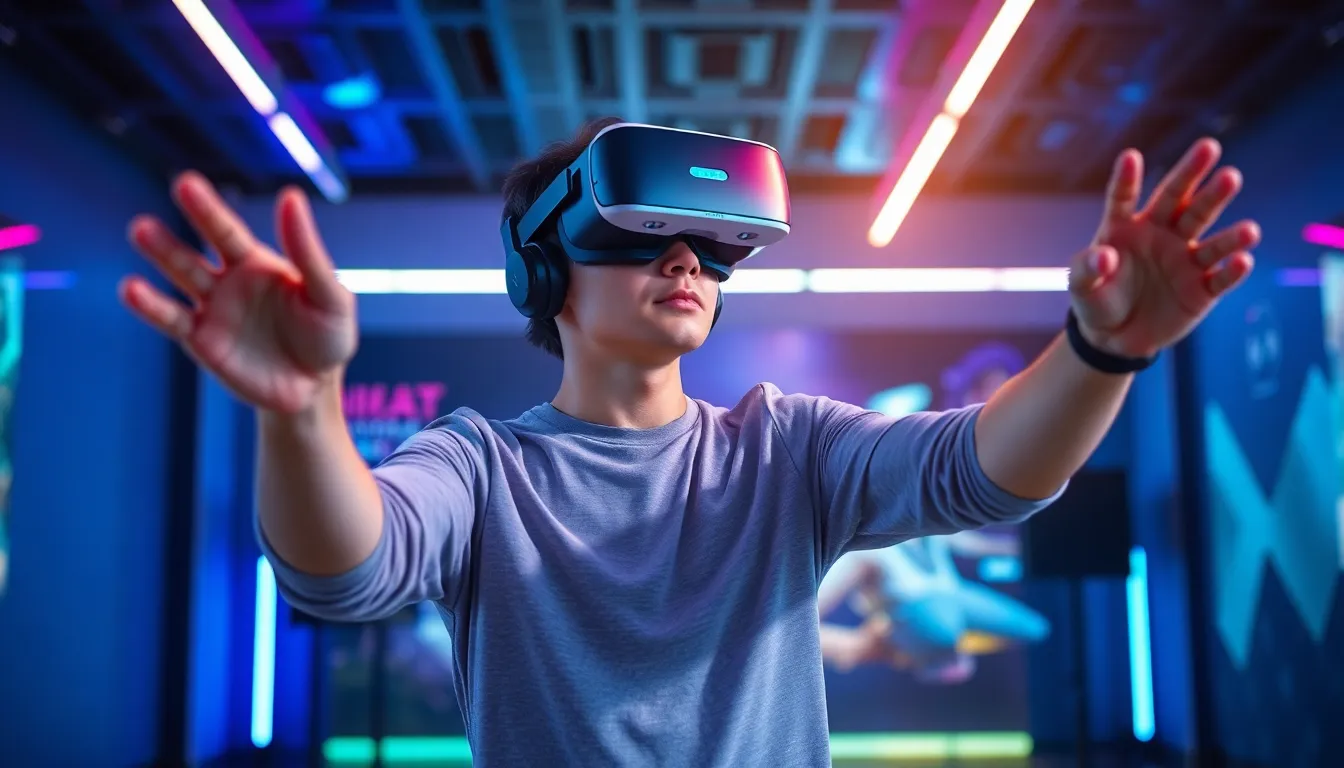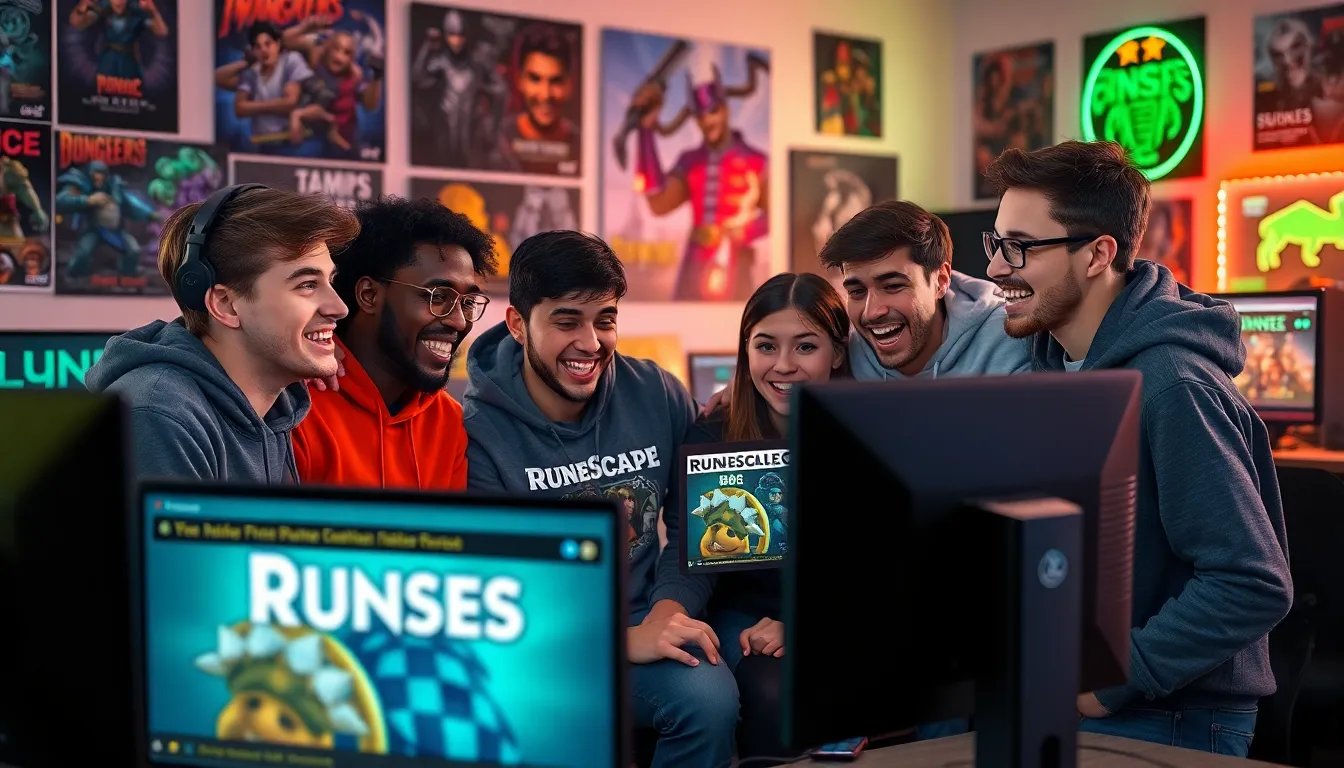Picture this: you’re in a virtual arena, sword in hand, ready to slice through your enemies like a hot knife through butter. But wait! How does that sword feel so real? Enter the fascinating world of VR sword combat physics. It’s not just about flailing your arms wildly; it’s a complex dance of momentum, gravity, and a dash of digital magic that makes every swing feel like a blockbuster action scene.
In this brave new world of virtual reality, the laws of physics take center stage, making battles more thrilling than ever. From the weight of the blade to the impact of each strike, understanding these principles can turn a novice into a virtual warrior. So, strap on your headset and prepare to dive into the mechanics that make VR sword fighting not just a game, but an experience that’ll have you questioning reality—while laughing at your own epic fails.
Table of Contents
ToggleOverview of VR Sword Combat Physics
VR sword combat relies heavily on physics to deliver an engaging experience. Momentum plays a crucial role, affecting the speed and force of each swing. Players can feel the difference between a gentle tap and a powerful strike, thanks to the accurate representation of these physical laws.
Gravity’s influence is also significant. In VR, it simulates the weight of the sword and the necessary balance required for effective fighting. Each weapon feels unique, allowing players to adapt to various swords and styles. Precision in these interactions fosters a deeper connection with the game mechanics.
Collision detection systems enhance realism during combat. These systems ensure that every hit registers accurately, enabling genuine reactions from opponents. When a sword strikes another, players perceive the impact based on the physics engine, creating a more immersive atmosphere.
Animations contribute to the physicality as well. High-quality animations paired with responsive controls heighten the sense of realism. As players engage in combat, their movements mimic real-life techniques, resulting in a more compelling gameplay experience.
Physics also determines the environment’s impact on combat. Terrain variations can affect strategies and positioning during fights. Understanding these dynamics allows players to leverage their surroundings for tactical advantages.
Finally, developers continuously refine physics algorithms to improve realism. Innovations in VR technology enhance tracking accuracy and feedback, further immersing players in the sword-fighting world. As a result, the interplay of physical laws shapes not only player performance but also the overall enjoyment of VR sword combat.
Key Elements of Sword Combat Physics

Understanding the key elements of sword combat physics is essential for a realistic VR experience. Each aspect contributes to how players engage in virtual battles, driving immersion and skill development.
Weight and Balance
Weight influences how a sword feels when wielded. A heavier sword requires more strength to maneuver, impacting swing speed. Balance dictates how easily a player can control their weapon. For instance, a well-balanced sword allows fluid movements, while a poorly balanced one can hinder effectiveness during combat. Developers carefully simulate these factors in VR to recreate authentic sensations. By integrating realistic weights and balance, gamers experience a heightened sense of realism that mirrors physical sword fighting.
Momentum and Force
Momentum determines the effectiveness of each swing in virtual battles. A powerful strike generates momentum, translating into greater impact when it connects with an opponent. Conversely, a gentle tap provides minimal momentum, eliciting a different response. Real-time physics calculations adapt to the player’s movements, ensuring impactful interactions. Developers utilize precise algorithms to assess force during attacks. These calculations foster a competitive environment where strategy and timing become essential for success in VR sword combat.
VR Sword Combat Mechanics
VR sword combat combines advanced physics for a realistic experience. Players navigate through a dynamic virtual space where every action matters.
Interaction with the Virtual Environment
Interaction with the virtual environment shapes the overall gameplay experience. Objects within the scene respond to sword strikes, adding weight to the player’s actions. Players can slice through obstacles, enhancing immersion and strategy. Developers incorporate destructible elements, allowing for creative tactics during combat. Environmental features such as slopes or obstacles further influence fight dynamics. Terrain variations require players to adapt their approach, making each encounter unique.
Response to Player Input
Response to player input is crucial for creating engaging sword combat. High-quality tracking systems translate real-world movements into the virtual setting. Accurate hit detection ensures that players experience meaningful impacts with every swing. Feedback mechanisms provide immediate sensory responses, heightening player engagement. Developers design controls to feel intuitive, allowing for fluid motion and precise aiming. This attention to detail fosters a sense of agency, empowering players as they journey through intense sword-fighting scenarios. Each successful action reinforces confidence, contributing to an overall exhilarating experience.
Challenges in VR Sword Combat
Various challenges arise in VR sword combat, particularly when balancing realism and gameplay.
Combat Realism vs. Gameplay
Developers face a constant tug-of-war between creating realistic sword movements and ensuring enjoyable gameplay. Authentic sword fighting intricately involves motion fluidity, technique application, and opponent reactions. Realism enhances immersion, leading players to believe in the environment’s validity. Striking a balance ensures players can enjoy engaging gameplay without feeling overwhelmed by overly complex mechanics. Factors such as animation responsiveness and sword weight affect player experiences directly. Ensuring a seamless transition between realistic movements and user-friendly controls enhances overall satisfaction.
Technical Limitations
Technical limitations can hinder the VR sword fighting experience. Hardware constraints often restrict tracking accuracy, impacting collision detection and movement fluidity. Latency can disrupt real-time responsiveness, leading to player frustration. Additionally, maintaining high-quality graphics while ensuring performance can be challenging. These limitations affect how immersive the experience feels, directly influencing players’ interactions. Developers continually strive to improve hardware capabilities and optimize software solutions. Addressing these technical challenges becomes essential for delivering an engaging combat experience.
Future Developments in VR Sword Combat Physics
Emerging trends in VR sword combat physics focus on improving realism and gameplay. Developers are exploring advanced haptic feedback technologies to enhance players’ tactile experiences. High-fidelity force feedback systems create sensations that mimic resistance felt during real sword strikes, making interactions more compelling.
Innovative motion capture techniques are set to refine character animations. By using sophisticated sensors, developers capture players’ movements accurately, translating them into realistic in-game actions. This approach deepens immersion, allowing users to engage with combat mechanics authentically.
Artificial intelligence plays a crucial role in shaping future combat dynamics. Intelligent NPCs improve adaptability during encounters, responding to players’ strategies and movements. This creates a more challenging environment, encouraging players to refine their skills and strategies.
Next, improvements in physics engines promise to deliver enhanced collision detection accuracy. Precise calculations of swords interacting with objects enrich the gameplay, ensuring that players’ actions have consistent and believable outcomes. Enhanced visual effects will further immerse players in the combat experience, creating immersive environments filled with realistic interactions.
Lastly, virtual reality hardware continues evolving. Advances in headset technology and tracking systems reduce latency and increase movement fluidity. Improved hardware capabilities allow for larger play areas and more complex interactions, enhancing the overall combat experience. Through these developments, VR sword combat physics will evolve, pushing boundaries and offering engaging experiences.
The world of VR sword combat continues to evolve as developers push the boundaries of realism and gameplay. By focusing on physics and player interaction they create experiences that captivate and challenge. The integration of advanced technologies promises to enhance immersion and engagement further.
As players become more skilled in navigating these virtual realms they’ll find themselves not just as participants but as warriors. The balance between authenticity and enjoyment remains crucial as developers strive to refine their craft. With each advancement in haptic feedback and AI opponents players can look forward to increasingly thrilling encounters that redefine sword fighting in virtual reality.








